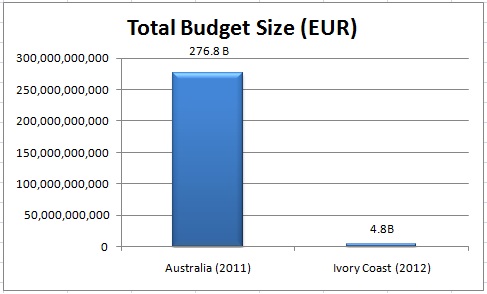Crunch Time
It’s looking like the debt situation in Western Europe is approaching crunch time. Regardless what governments do I just don’t see how they can meet the expectations of their peoples in terms of stuff like goods and services, public sector jobs, various benefits and allowances, or pensions.
The direct cause is debt spiraling out of control, and I’d say the fundamental causes for that are:
1) Demographics – an aging population
2) A welfare state that has been allowed to expand more than what could be afforded
3) Governments taking on bank debt instead of letting banks fail
Not all countries in Western Europe have messed up though, but all will be affected, and especially export-dependent ones like Sweden. In Sub-Saharan Africa I don’t think any country have the problems above, but the effects of the coming crisis will be felt there as well, but, I think, less severely than in Europe. I wrote about potential effects for the Ivory Coast in the Well, Western World that was a nice 500 year streak post.
As to what’s going to happen in Europe, it’s a lot harder to predict than the Ivorian crisis, where it was quite entertaining and not always difficult to guess Gbagbo’s next moves.
The options for debt ridden European governments are:
(1) Austerity – to cut spending significantly which is politically difficult as it’s never popular. For Greece it’s probably too late, but the other countries could still do it.
(2) Raise taxes, but due to tax levels already being high it’s possible that money flight and reduced economic activity actually make tax revenue fall as taxes increase
(3) Redirect (or confiscate) available assets, like forcing publicly controlled pension funds to buy government bonds or influencing commercial banks to buy government bonds
(4) Getting Central Banks to print money to cover deficits – possible for non-eurozone countries, and pressure seems to be mounting on the ECB to do the same in one indirect way or another. But there are problems with printing to put it mildly. Quoting a zerohedge article:
However, it [printing] leaves the current status quo and financial system intact, does not provide the much needed lesson on productive capital allocation, provides no incentive for governments to put in real structural reforms because of tighter credit conditions and it will only benefit debtors and not savers. Savers will be punished greatly, especially since there is no limit to printing currency and the central bank could carry on undisturbed for a long period of time. This will continue to ease the burden on debtors due to inflation, but looming hyperinflation will be devastating for everyone.
(5) Default on a big chunk of government debt. This risks causing a chain reaction default in the European (and global) financial system as many big banks would be bankrupt in case of a large sovereign default.
One conclusion seems to be that pensioners will get the short end of the stick as the value of pensions will be reduced in all scenarios (except (2) but raising taxes doesnt really solve the problem anyway). My guess is that we’ll get all of the above, and real questions are whether it will be an orderly retracement or not, and whether it will go down the default-deflation route or the printing-inflation route.
Brace for Impact
Either way, it seems to be time to brace for impact. My main brace-for-impact strategy are the investments in the Ivory Coast – especially the chicken farm seems to be quite well suited for tougher times. Even if things were fine in Europe, I’d still have made the investments in the Ivory Coast though – but this situation increases the urgency a bit.
Other ideas to protect one’s assets could be to buy:
-Currencies of fiscally responsible countries that seem to be able to weather a storm better than others, like Norway, Singapore or Switzerland (betting they will not keep the peg, or that the euro will split up)
-Gold, silver or stocks in gold/silver mining companies. Not too great in a deflation-default scenario though.
-Stocks in solid companies producing stuff people need even in a severe downturn.
-Real assets, preferably incoming producing ones, and preferably in parts of the world less hit by a coming crisis – and well, here we are back with the investing in Africa theme.
-Or for the real doomsdayers guns and food, but I doubt it will be that bad.
Or get a job (or start a business) outside the developed world. There are still billions of people joining the middle class, and for the world as a whole I think there is reason for optimism and plenty of opportunities.











